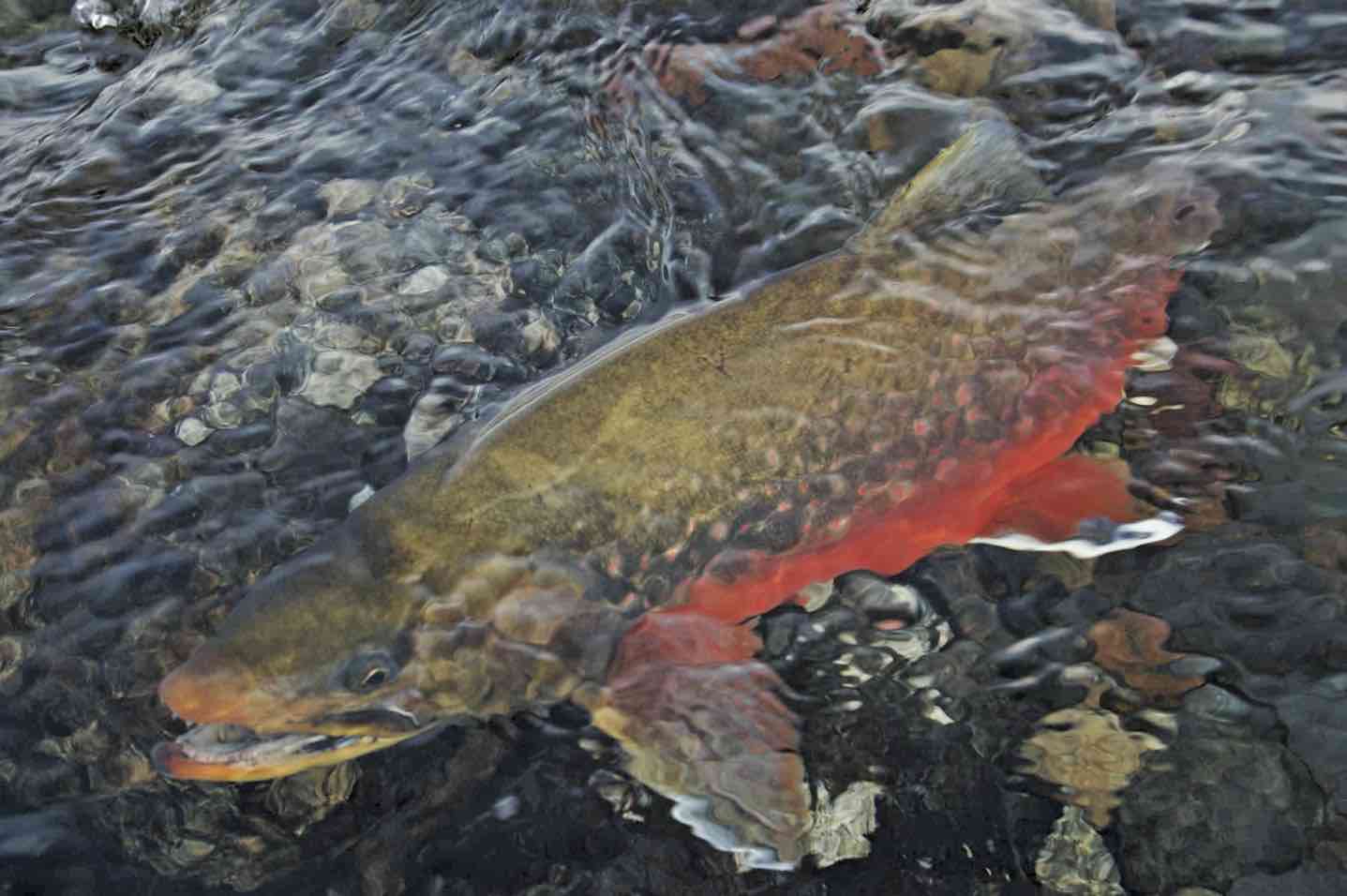Arctic charr in a changing climate: predicting possible impacts of climate change on a valued northern species in Nunavik and Nunatsiavut

Date de publication
2012Mots clés
NunavikNunatsiavutNainArctic charrSalvelinus alpinusThermal biologyManagement initiativeCe document devrait être cité de la manière suivante:
Power, M., Dempson, B.J., Doidge, B., Michaud, W., Chavarie, L., Reist, J.D., Martin, F., and Lewis, A.E. 2012. Arctic charr in a changing climate: predicting possible impacts of climate change on a valued northern species. In Allard, M. and M. Lemay (eds.) Nunavik and Nunatsiavut: From science to policy. An Integrated Regional Impact Study (IRIS) of climate change and modernization. ArcticNet Inc., Quebec City, Canada.
Résumé
Arctic charr is considered a generalist species, exists in a wide variety of habitats throughout the eastern Subarctic and adopts a number of different life-history strategies, e.g., lake residency and anadromy. They are considered vulnerable to the predicted impacts of climate change because of their preference for coldwater conditions. Because of the ecological differences among populations it is important when considering the potential consequences of climate change on Arctic charr that distinctions are made between populations on the basis of anadromy and freshwater residency. The few environmental influence-based studies of Arctic charr that exist in Canada indicate clear environmental influences on Arctic charr populations, with temperature and precipitation being the most important as a result of their respective effects on fish metabolism and opportunities for acquiring surplus energy for growth. Studies have shown that lake resident Arctic charr vary in size and growth rate along latitudinal gradients largely as a result of environment-driven variations in lake water temperatures. Arctic charr that migrate to sea do not show the same pronounced variation in size or growth along the latitudinal gradient because of the moderating influences of sea surface temperatures. However, studies of marine migrants have shown that Arctic charr are nevertheless directly affected by inter-annual variations in local marine temperatures and that differences in growth patterns could be linked to ecosystem shifts such as changes in marine thermal regimes associated with predicted climate changes. Similar, although minor, effects have been shown for changes in fecundity in lake resident and anadromous Arctic charr along the same latitudinal gradient. In a warming environment lacustrine Arctic charr are the most likely to be impacted by predicted summer temperature increases, with effects being most acute at the southern edge of the distribution where the warming will be greatest and competition from other salmonid fish species better able to cope with warmer temperatures will be most intense. Warming temperatures will facilitate range extension of potential competitor fish species that are likely to force Arctic charr in many lakes to become restricted to the deeper parts of the lake. In contrast, anadromous Arctic charr may reduce their period of sea-residency, with the experience of limited anadromy in the south suggesting that marine migrations may be significantly reduced or eliminated as temperatures increase. Such changes will have profound impacts on Inuit that rely on Arctic charr as a significant source of dietary protein. To some extent such impacts may be mitigated by pro-active environmental management as Inuit-led stream enhancement and population introductions have shown. Nevertheless, a key challenge facing resource managers is the continued collection and documentation of harvest-related impacts on Arctic charr. Given the few detailed harvest studies that do exist, it is currently difficult to design and implement the adaptive management strategies necessary to ensure the sustainability of Arctic charr fisheries in the face of climate change and other human driven development impacts. Key knowledge gaps concerning the biology (e.g., variations in age-at-maturity) and population dynamics (e.g., mortality rates) inhibit our abilities to accurately predict climate change impacts on Arctic charr and suggest there is considerable value in collecting long-term data sets specific to the species.